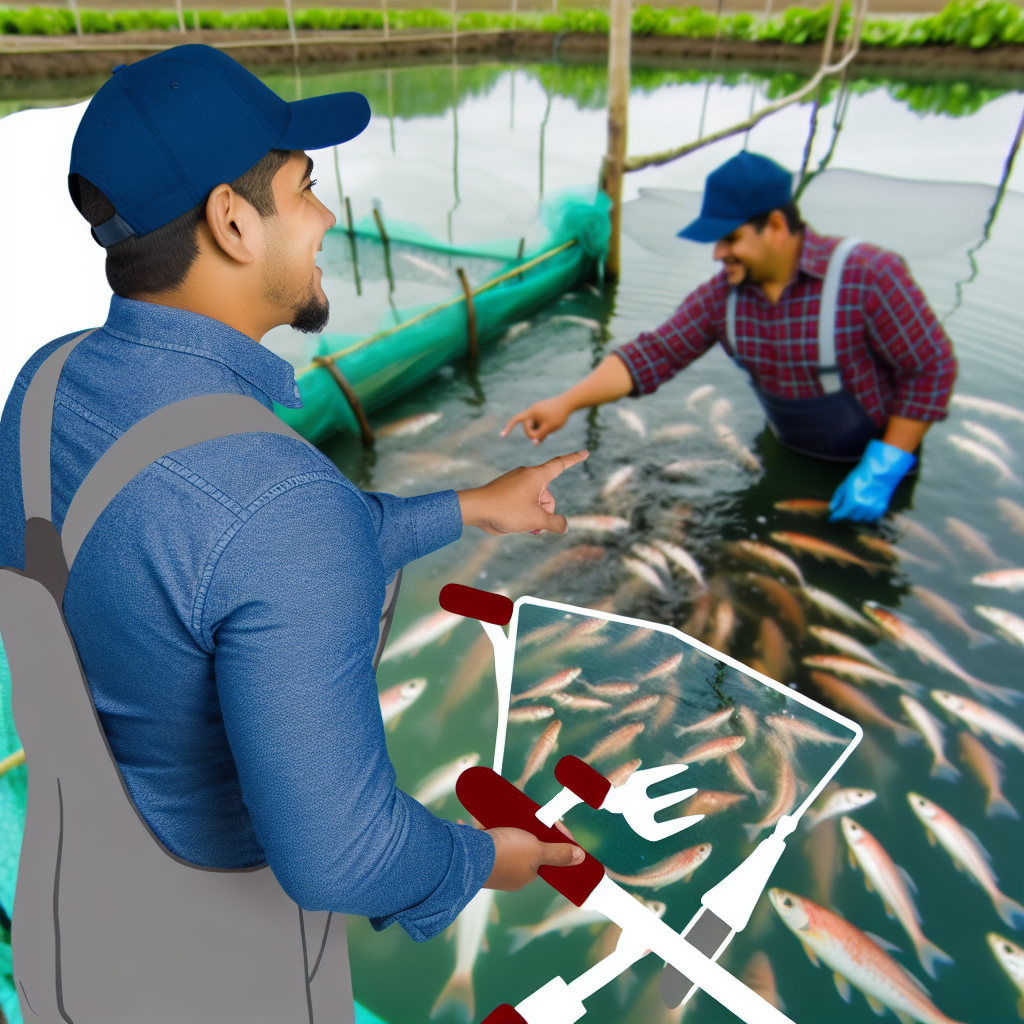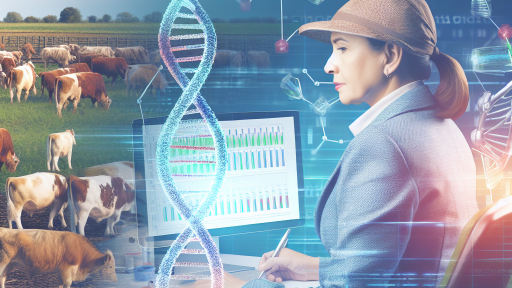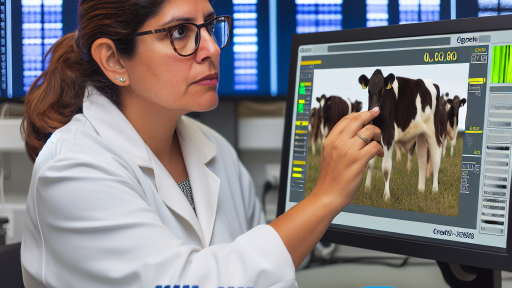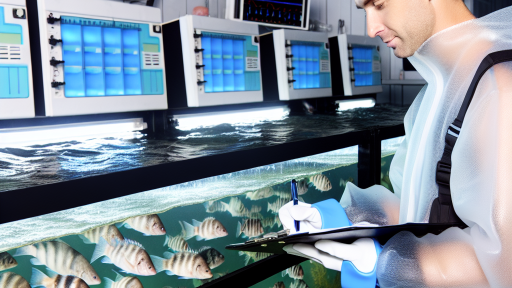Introduction to Fish Farming and Its Economic Impact
Fish farming, or aquaculture, significantly contributes to the economy.
This method provides a reliable source of protein for many communities.
It creates jobs and stimulates local businesses.
Investing in fish farming yields numerous economic benefits.
Initially, it reduces the pressure on wild fish stocks.
This helps maintain biodiversity in aquatic ecosystems.
Fish farming can support food security by ensuring a steady supply of fish.
Additionally, it can offer high returns on investment for entrepreneurs.
As demand for seafood grows, fish farming plays a vital role.
Job Creation and Economic Development
Fish farming operations provide direct employment opportunities.
Workers are needed for breeding, caring for, and harvesting fish.
Indirectly, it supports jobs in the supply chain.
For example, suppliers of feed and equipment see increased demand.
Moreover, fish farming encourages local economic growth.
It attracts investments and stimulates infrastructure development.
Transform Your Agribusiness
Unlock your farm's potential with expert advice tailored to your needs. Get actionable steps that drive real results.
Get StartedEnhancing Food Security
Fish farming contributes to global food security.
This method can produce fish in a controlled environment.
Consequently, it helps meet increasing consumer demand.
Farming fish minimizes the risks of overfishing in oceans and rivers.
It provides nutritious food to communities lacking access to fresh seafood.
Promoting Sustainable Practices
Innovative fish farming practices promote sustainability.
Farmers can implement technologies that reduce waste.
For example, recirculating aquaculture systems minimize water use.
Additionally, integrated multi-trophic aquaculture enhances resource efficiency.
This approach cultivates fish alongside plants and shellfish.
Generating Revenue and Profit
Fish farming offers significant profit potential for investors.
The industry has witnessed rapid growth in recent years.
With proper management, fish farms can achieve high yields.
Moreover, premium markets for organic and sustainable fish are expanding.
Entrepreneurs can capitalize on this growing market trend.
Overview of Global Fish Farming Industry Growth Trends
Current Growth Statistics
Fish farming, also known as aquaculture, is experiencing remarkable growth worldwide.
According to the Food and Agriculture Organization, global fish production reached 179 million tons in 2020.
This figure includes both wild-capture fisheries and aquaculture.
Additionally, aquaculture accounted for approximately 46% of total fish production.
These statistics reflect the rising demand for seafood amid growing populations.
Regional Development
Asia dominates the fish farming industry, contributing over 89% of global aquaculture production.
China is the leading country, with 64 million tons produced in 2020 alone.
Other significant players include India, Vietnam, and Indonesia.
These nations are increasingly investing in advanced aquaculture practices.
Showcase Your Farming Business
Publish your professional farming services profile on our blog for a one-time fee of $200 and reach a dedicated audience of farmers and agribusiness owners.
Publish Your ProfileThese practices ensure improved sustainability and efficiency.
Technological Advancements
Innovations in aquaculture technologies have fueled growth in the industry.
To illustrate, improvements in breeding techniques enhance fish stock quality.
Additionally, new feeding technologies optimize nutrition and growth rates.
Moreover, advancements in water management systems improve environmental sustainability.
These innovations also reduce waste and disease risks.
Market Trends
The global seafood market is projected to continue growing in the coming years.
Consumer preferences are shifting toward healthy and sustainable seafood options.
Consequently, fish farming is positioned to meet these demands efficiently.
Furthermore, increasing interest in plant-based and cultivated seafood products is notable.
This shift offers additional opportunities for fish farming companies.
Sustainability Practices
Sustainability has become a focal point within the fish farming sector.
Farmers are adopting techniques that minimize environmental impact.
For instance, integrated multi-trophic aquaculture combines different species for balanced ecosystems.
Additionally, recirculating aquaculture systems are gaining popularity due to their efficiency.
These systems recycle water, reducing the overall resource consumption.
Investment Opportunities
The growth of the fish farming industry presents diverse investment opportunities.
Investors are increasingly drawn to aquaculture for its profitability and sustainability potential.
Startups focusing on innovative technologies are attracting significant venture capital.
Moreover, established companies seek to expand their operations into new markets.
This trend showcases growing optimism about the future of fish farming worldwide.
Cost-Benefit Analysis of Setting Up Fish Farms
Initial Investment Costs
Setting up a fish farm requires a significant upfront investment.
Initial costs include land acquisition, pond construction, and equipment purchases.
Furthermore, expenses for water quality management and feed must be considered.
These costs can vary widely depending on the scale of the operation.
Operational Expenses
Once established, operational expenses become the focus.
Fish farms incur regular costs for labor, feed, and maintenance.
Electricity and water usage also contribute to ongoing monthly expenses.
Moreover, disease management and veterinary services add to these costs.
Revenue Potential
Fish farming presents lucrative sales opportunities.
The demand for fish remains consistently high in most regions.
Additionally, selling fish directly to consumers can increase profits.
Value-added products, like smoked or processed fish, can also boost revenue.
Return on Investment Analysis
Conducting a return on investment (ROI) analysis is crucial.
This assessment considers total income generated against total expenses incurred.
Typically, fish farms can become profitable within a few years.
Nevertheless, the timeline for ROI often depends on market conditions.
Risk Factors
Fish farming entails various risks that investors must assess.
Market fluctuations can affect the selling price of fish significantly.
Additionally, diseases can rapidly impact fish stocks and income consistency.
Showcase Your Farming Business
Publish your professional farming services profile on our blog for a one-time fee of $200 and reach a dedicated audience of farmers and agribusiness owners.
Publish Your ProfileEnvironmental factors, such as water quality and weather, also pose challenges.
Long-Term Economic Impact
Investing in fish farming offers potential long-term economic benefits.
It contributes to local economies by creating jobs and income opportunities.
Furthermore, fish farming supports food security and sustainable practices.
Ultimately, these factors enhance community resilience and growth.
Delve into the Subject: Creating a Successful Breeding Program from Scratch
Job Creation and Economic Development in Rural Areas
Boosting Employment Opportunities
Fish farming significantly boosts employment opportunities in rural areas.
It requires various skill sets including farming, processing, and sales.
Local communities benefit from direct job creation in these sectors.
Furthermore, fish farming often leads to indirect employment opportunities.
Support services like transportation and feed supply also expand job possibilities.
Enhancing Local Economies
Investing in fish farming elevates the local economy.
Fisheries contribute to increased household incomes in rural regions.
This increase in income enhances spending power among local residents.
Consequently, businesses in the area experience higher demand for their services.
Such economic growth leads to a more vibrant local marketplace.
Supporting Sustainable Development
Fish farming encourages sustainable economic practices.
It minimizes the strain on wild fish populations through aquaculture practices.
Sustainable fish farming methods contribute to environmental conservation.
By promoting responsible farming, communities ensure long-term viability.
Moreover, education about sustainable practices fosters community engagement.
Attracting Investment and Innovation
The growth of fish farming attracts investments in rural areas.
Government grants and private investments support aquaculture initiatives.
This investment leads to technological advancements in the sector.
Innovations improve efficiency and productivity within fish farming operations.
Overall, it creates a competitive edge for local producers.
Building Community Resilience
Fish farming enhances community resilience in various ways.
Diverse income sources reduce the economic impact of market fluctuations.
Rural communities become less reliant on traditional agriculture.
As a result, they can better withstand economic downturns.
This resilience contributes to long-term community stability and growth.
Learn More: Effective Feed Management Strategies for Aquaculture
Role of Fish Farming in Food Security and Nutrition
Contribution to Global Food Supply
Fish farming significantly boosts the global food supply.
It provides a reliable source of protein for millions of people.
Moreover, it helps meet the increasing demand for seafood.
Notably, aquaculture is one of the fastest-growing food production sectors.
Promotion of Nutritional Health
Fish is rich in essential nutrients and omega-3 fatty acids.
These nutrients support heart health and brain development.
Consequently, incorporating fish into diets improves overall health.
Fish farming makes these nutritious foods more accessible to all.
Showcase Your Farming Business
Publish your professional farming services profile on our blog for a one-time fee of $200 and reach a dedicated audience of farmers and agribusiness owners.
Publish Your ProfileSustainable Solution for Food Security
Fish farming can help alleviate pressure on wild fish populations.
It offers a sustainable alternative to overfishing.
When done responsibly, it minimizes environmental impact.
This method supports long-term food security for future generations.
Economic Empowerment through Job Creation
Fish farming creates numerous job opportunities in local communities.
These jobs span different sectors, from production to distribution.
Additionally, fish farms can stimulate local economies.
Moreover, they contribute to food sovereignty and local resilience.
Encouragement of Local and Sustainable Practices
Fish farming promotes local economic stability.
It encourages the use of sustainable practices in fish production.
Furthermore, local farms reduce the carbon footprint associated with transportation.
This focus on local production fosters community development.
Delve into the Subject: Benefits of Artificial Insemination in Livestock

Export Opportunities and International Trade in Fish Products
Growing Global Demand
The global demand for fish products continues to rise steadily.
Health trends emphasize the importance of seafood in diets.
Consumers seek high-protein and low-fat food sources.
This trend creates significant export opportunities for fish farmers.
Market Expansion Strategies
Fish farming businesses can explore various market strategies.
Diversifying products helps in meeting international standards.
Investing in quality control and certification enhances market appeal.
Additionally, understanding trade regulations is crucial for exporting.
Investment in Infrastructure
Developing export-oriented infrastructure can streamline operations.
Efficient transportation systems facilitate quicker deliveries.
Cold storage facilities prevent spoilage during transit.
Upgrading processing facilities ensures higher product quality.
Collaboration with Export Agencies
Partnering with export promotion agencies provides valuable resources.
These agencies assist in navigating market entry challenges.
They also help in identifying potential trade partners.
Furthermore, they provide information on market trends and demands.
Case Studies of Successful Exports
Several companies excel in international fish markets.
For instance, Ocean Harvest consistently meets quality standards.
They export various fish types to Asia and Europe.
Similarly, AquaExports has built strong relationships with distributors.
Challenges in International Trade
Exporting fish products does present several challenges.
Market competition is fierce, especially from established players.
Regulatory compliance can be tedious and costly.
Moreover, fluctuating currency rates impact profit margins.
Gain More Insights: Sustainable Livestock Farming: Balancing Animal Welfare and Profit
Sustainability and Environmental Benefits Leading to Economic Gains
Boosting Local Economies
Fish farming creates significant job opportunities in local communities.
These jobs range from breeding to processing and distribution.
Showcase Your Farming Business
Publish your professional farming services profile on our blog for a one-time fee of $200 and reach a dedicated audience of farmers and agribusiness owners.
Publish Your ProfileAs a result, local economies see a direct boost from fish farming investments.
Reducing Carbon Footprint
Fish farming produces fewer greenhouse gases compared to other livestock farming.
This practice contributes to reduced overall environmental impact.
Consequently, investors benefit from the growing demand for sustainable practices.
Conserving Natural Resources
By utilizing controlled environments, fish farming conserves ocean resources.
Less reliance on wild fish stocks supports aquatic ecosystem health.
This sustainable approach enables long-term viability for fish farming ventures.
Enhancing Food Security
Fish farming can help meet the increasing global demand for protein.
This industry offers a steady supply of affordable and nutritious food.
As a result, investing in fish farming directly contributes to improved food security.
Sustainability Certifications and Market Access
Obtaining sustainability certifications can open new markets for fish farmers.
With increasing consumer demand for certified products, profitability rises.
Thus, sustainability becomes a key factor for fish farming success.
Government Policies and Incentives Supporting Fish Farming Investments
Importance of Government Involvement
The government plays a crucial role in the development of fish farming.
Supportive policies encourage investment and innovation in the industry.
Overall, government involvement drives sustainable growth in fish farming.
Financial Incentives for Investors
Several financial incentives exist for fish farming investors.
Tax breaks can reduce the overall cost of investment significantly.
Grants and subsidies provide additional funding opportunities.
These measures make starting and operating a fish farm more feasible.
Regulatory Framework Benefits
A clear regulatory framework enhances the credibility of fish farming.
It streamlines the process of obtaining necessary licenses and permits.
Furthermore, regulations ensure adherence to environmental standards.
This legal structure protects both investors and the ecosystem.
Research and Development Support
Investments in research and development support technological advancements.
Governments often collaborate with universities and research institutions.
This collaboration fosters innovations that improve yield and sustainability.
Consequently, enhanced practices can lead to more profitable operations.
Market Access and Promotion
Governments assist fish farmers in accessing larger markets.
Promotional campaigns help increase public awareness of fish farming products.
This access improves the competitiveness of farmed fish in the market.
Community and Cooperative Support
Community programs encourage collective investments in fish farming.
Cooperatives can leverage shared resources for better efficiency.
This collective approach can result in reduced operational costs.
Moreover, community support fosters local employment opportunities.
Additional Resources
Fisheries Economics of the United States | NOAA Fisheries
Interior and Commerce Departments Announce $240 Million from …




